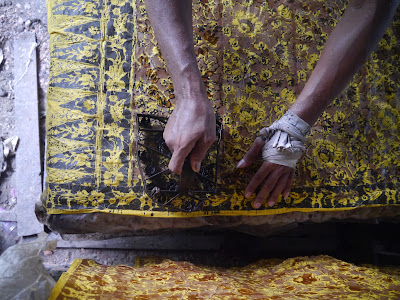Batik History, a Chinese Link?
 |
| Batik wax resist dyeing cloth of China's Bai minority (Source: g-trip.net) |
It is believed that batik or wax resist dyeing, in Chinese known as là rǎn 蜡染, existed in China as early as during the late Qin (BC 221-207) or early Han (BC 206-CD 220) Dynasty, though widespread knowledge the existence of Chinese batik as a finished product first occurred during the Tang (618-907) Dynasty, when batik became yet another "Silk Road" commodity that was exported.
In the 8th century, trading between Malacca Straits and Gujarat was built, and textile trading began. The word batik itself only emerged in the 8th century. In Kakawin Ramayana, an old Javanese poem, there was a reference to batik; it was said that the word batik originated from the word tika, which means ‘holy painting.’
According to the Dutch, batik techniques were first created in China, was further developed in India before becoming synonymous with Java. Batik had travelled with trade.
In Sumatra, the Minang also have a batik with Chinese influence known as "batik tanah liek". The word tanah liek refers to clay in Minang language. Minang elders said they got the heirloom textile from China. The batik making process requires soaking the fabric in clay for a week before the fabric is ready for the dyeing process. The batik uses natural dyes which produces a unique colour in the fabric.
Read about Chinese batik via China Highlights article: Chinese Batiks, Chinese Wax Printing.


Comments
Post a Comment